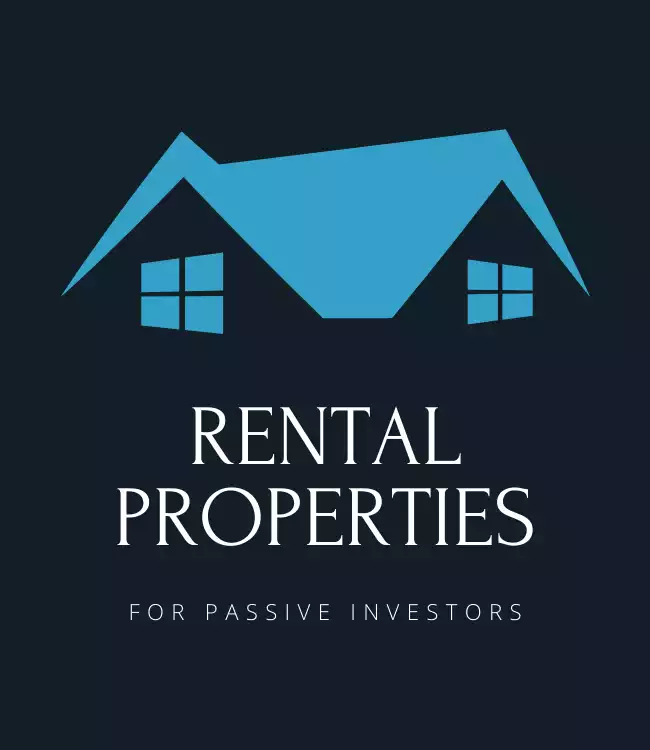LMM has been on a real estate kick lately. It can be a great source of passive income. If you are considering it, here’s what you need to know about the one percent rule and other real estate math when buying a rental.
Passive Income
We believe that you should always have more than one source of income. No employee is indispensable these days, so we all need a Plan B. But not many of us have the time or inclination to work a second job.
So we need a source of passive income. Passive income is a stream of money coming in that you don’t have to work very hard to earn. Things like dividends from investments, royalties from an e-book, or advertising revenue from ads on your blog. Or the passive income generated from owning rental property.
Hands Off
A lot of people may not seriously consider owning
In fact, you don’t even have to live anywhere near the property you rent. A property management company can handle all of the day to day work of being a landlord for you. All you have to do is pay them each month, and they send you the rent check in return.
Our proven, data-driven approach to building a portfolio of income-producing rental properties that perform in the long-term.
What Makes a Good Rental Property ?
When searching for a
You want the town the property is in to have a healthy job market with some diversity. If your tenant lost their job, would they be able to find a new one locally and quickly or would they have to move and break the lease?
Or worse, they may be unable to pay and unable to leave, forcing you to start the eviction process which can be lengthy and expensive.
Are there a lot of vacancies in the neighborhood you want to buy in? This could be a sign that renters are seasonal (like college students) or the neighborhood is going downhill, and people are moving out.
If you’re new to the rental game, a single-family home is the best way to get your feet wet. They attract long-term renters, couples, and families. The less turnover you have, the less hassle and expense you have.
A condo is another low maintenance option but if you’re using a management company, the level of input required from you is about the same anyway. Do check out the requirements of the condo board to rent out your place.
There can be pages of rules that make it a hassle for both you and potential renters. There may also be rules that bar renting your place entirely.
Our proven, data-driven approach to building a portfolio of income-producing rental properties that perform in the long-term.
Real Estate Math
Okay, we all know why you’re doing this. To make money. All the things listed above are important, and you will make more money when you’ve chosen a place based on them than if you ignore them, but they are all somewhat subjective.
What isn’t subjective is numbers and that’s what we’re going to look at. What numbers will tell you if a
There are several calculations that will help you choose a

The One Percent Rule
The one percent rule isn’t some complicated formula you need an abacus to figure out. It just means that what you charge for rent each month should be equal to (or greater than) 1% of what you paid for the house.
- A $75,000 house should rent for a minimum of $750 per month
- A $150,000 house should rent for a minimum of $1,500 per month
- A $200,000 house should rent for a minimum of $2,000 per month
Be sure to note that when we say the rental price should be 1% of what you paid for the house, that number should include the cost of any renovations, repairs, or improvements.
If you buy a house for $100,000 and put in another $100,000 to renovate it, it doesn’t make sense to rent if for $1,000. You would need to rent it for at least $2,000 per month.
The one percent rule is just one of the measures you can use in the early stages of evaluating rental properties. Here are some more.
The Two Percent Rule
If your rental is in good shape, updated renovations, a good neighborhood, rented to stable, long term tenants, you can stick with the one percent rule. Your risk is relatively low so the payoff can be a bit low.
If your home is old, needs renovating, is in a downtrodden area or has a lot of tenant turnover, the two percent rule should be your guideline when setting the rent. Your risk is greater, so the reward needs to be greater too.
The two percent rule is exactly like the one percent rule:
- A $30,000 house should rent for a minimum of $600 per month
- A $40,000 house should rent for a minimum of $800 per month
- A $50,000 house should rent for a minimum of $1000 per month
The two percent rule generally applies to very inexpensive properties, those under $50,000.
Gross Rent Multiplier
Another piece of information you want to be armed with is how long it will take for your property to pay for itself. You can get a ballpark of this number by calculating the gross rent multiplier.
Gross rent multiplier is the ratio of the cost of a
To calculate GRM, you divide the sale price by a year’s gross rent:
100,000 divided by 12,000 = 8.3
In this case, it would take a little over eight years before the property has paid for itself.

Because GRM doesn’t take into account expenses, it should not be your sole method for evaluating whether or not a property is a good investment. Instead, think of it as a quick and dirty way to vet a long list of potential properties quickly and weed out the ones that would likely be the poorest investments on that big list.
The Fifty Percent Rule
The fifty percent rule means that the total cost of owning a
If you buy a home for $100,000, you should expect to rent it for $1000 a month (the one percent rule). Your costs to own that home should be around $500 a month.
You won’t have to spend fifty percent every year; sometimes it may be far less. But then comes that year in which you have a big expense, like replacing the roof. The fifty percent rule is meant to be an average over time.
The Wheat from the Chaff
All of these calculations are meant to be used as guidelines, not hard and fast rules to live by. If you’re new to buying rental properties, they can help you understand whether or not a property will make you money and if it is worth investigating further.
If you are experienced in buying rental properties, these numbers can help you narrow down a long list of potential properties.

![Buying Rental Property: Reduce Risk and Follow This Advice [UPDATED]](https://www.listenmoneymatters.com/wp-content/uploads/2020/03/getting-started-in-real-estate-768x432.png)